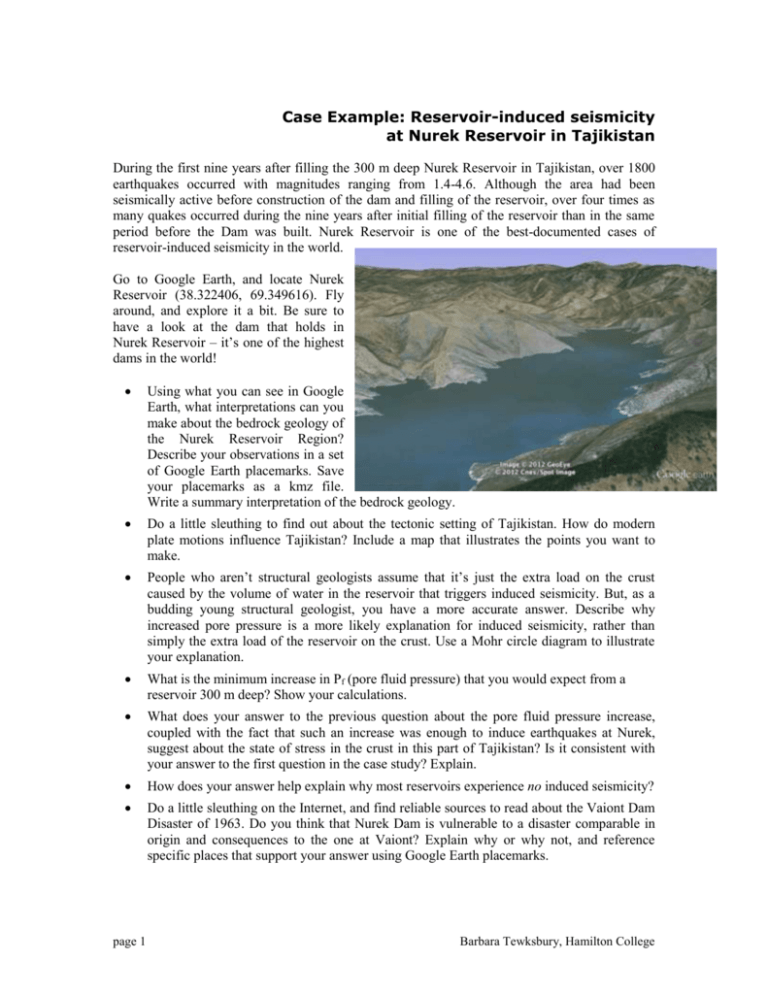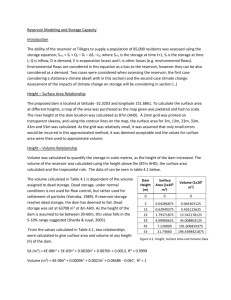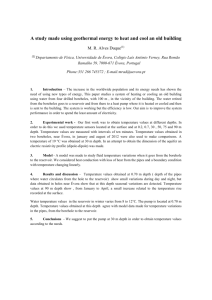Case Example: Reservoir-induced seismicity at Nurek Reservoir in
advertisement

Case Example: Reservoir-induced seismicity at Nurek Reservoir in Tajikistan During the first nine years after filling the 300 m deep Nurek Reservoir in Tajikistan, over 1800 earthquakes occurred with magnitudes ranging from 1.4-4.6. Although the area had been seismically active before construction of the dam and filling of the reservoir, over four times as many quakes occurred during the nine years after initial filling of the reservoir than in the same period before the Dam was built. Nurek Reservoir is one of the best-documented cases of reservoir-induced seismicity in the world. Go to Google Earth, and locate Nurek Reservoir (38.322406, 69.349616). Fly around, and explore it a bit. Be sure to have a look at the dam that holds in Nurek Reservoir – it’s one of the highest dams in the world! Using what you can see in Google Earth, what interpretations can you make about the bedrock geology of the Nurek Reservoir Region? Describe your observations in a set of Google Earth placemarks. Save your placemarks as a kmz file. Write a summary interpretation of the bedrock geology. Do a little sleuthing to find out about the tectonic setting of Tajikistan. How do modern plate motions influence Tajikistan? Include a map that illustrates the points you want to make. People who aren’t structural geologists assume that it’s just the extra load on the crust caused by the volume of water in the reservoir that triggers induced seismicity. But, as a budding young structural geologist, you have a more accurate answer. Describe why increased pore pressure is a more likely explanation for induced seismicity, rather than simply the extra load of the reservoir on the crust. Use a Mohr circle diagram to illustrate your explanation. What is the minimum increase in Pf (pore fluid pressure) that you would expect from a reservoir 300 m deep? Show your calculations. What does your answer to the previous question about the pore fluid pressure increase, coupled with the fact that such an increase was enough to induce earthquakes at Nurek, suggest about the state of stress in the crust in this part of Tajikistan? Is it consistent with your answer to the first question in the case study? Explain. How does your answer help explain why most reservoirs experience no induced seismicity? Do a little sleuthing on the Internet, and find reliable sources to read about the Vaiont Dam Disaster of 1963. Do you think that Nurek Dam is vulnerable to a disaster comparable in origin and consequences to the one at Vaiont? Explain why or why not, and reference specific places that support your answer using Google Earth placemarks. page 1 Barbara Tewksbury, Hamilton College





